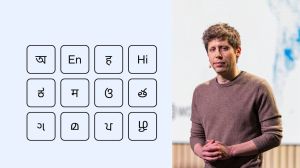Coming together
If a cutcheri has a singer for the main artiste, it could also well be an instrumental solo. A violin cutcheri, a flute, a veena, a gottuva...

If a cutcheri has a singer for the main artiste, it could also well be an instrumental solo. A violin cutcheri, a flute, a veena, a gottuvadyam, a nagaswaram, a mandolin, a saxophone or the almost vanishing jalatarangam. Why, Carnatic music has even inspired whistlers to perform a classical solo!
Whether the performer is a vocalist or an instrumentalist, it goes without saying that a cutcheri needs accompanying artistes, collectively referred to as pakkavadyam’ to put the effort in place. Normally, the main performer is accompanied by the violin and the mridangam and sometimes, the ghatam and the kanjira toom — the last three belonging to the group of percussive instruments. A cutcheri does not get the right texture without accompanying instruments. Right from the start, the combination of the performer’s music with the sounds of the violin and the mridangam creates an experience unique in itself.
The violin "follows" the principal artiste, maintaining unwaveringly all through the sruti of the cutcheri. The violinist gets the moment to display his expertise after every raga alaapana and stretch of niraval and kalpana swaras. The role of the mridangam, apart from providing rhythmic accompaniment to the main artiste, needs to maintain consistency of the tempo of the cutcheri at large. All percussive instruments have an incredible range of rhythmic patterns or sollus and it is left to the ingenuity of the artiste to pick and choose and place them as he accompanies, to elevate the concert quality. The percussive instruments display their capabilities during the solo portion called the tani avartanam’, replete with complexities and technical wonders complying with individual style.
Whatever be the individual capacities of the performers on stage, the unwritten rule, vastly understood, is that they work as a team, to generate a wholesome impact. It is not a competitive platform and the group effort has to respect the cutcheri ethics. A cohesive interaction by the accompanying artistes and the main performer, sharing a rapport that reflects itself in the presentation, is what making a good cutcheri is all about. One also has a cutcheri format devoted entirely to rhythm. An ensemble of percussive instruments, weaving together a cutcheri of laya is what one calls a tala vadya cutcheri. A popular form in the Carnatic music framework.
To achieve a closer link with Carnatic music, listen to more of it. The ear will create an affinity with the heart. The intellect can follow later. This process of listening, called karna parampara’ in musical parlance has a certain important value — it is the surest way of learning to appreciate music.
"The sense of hearing is the fortune of fortunes; that fortune is the greatest of fortunes," wrote the great Tamil poet Tiruvalluvar in one of his couplets. He must have had in mind the transcendental bliss that is obtained by listening to music.
V Badrinathan is a professional vocalist of Carnatic music





- 01
- 02
- 03
- 04
- 05


























